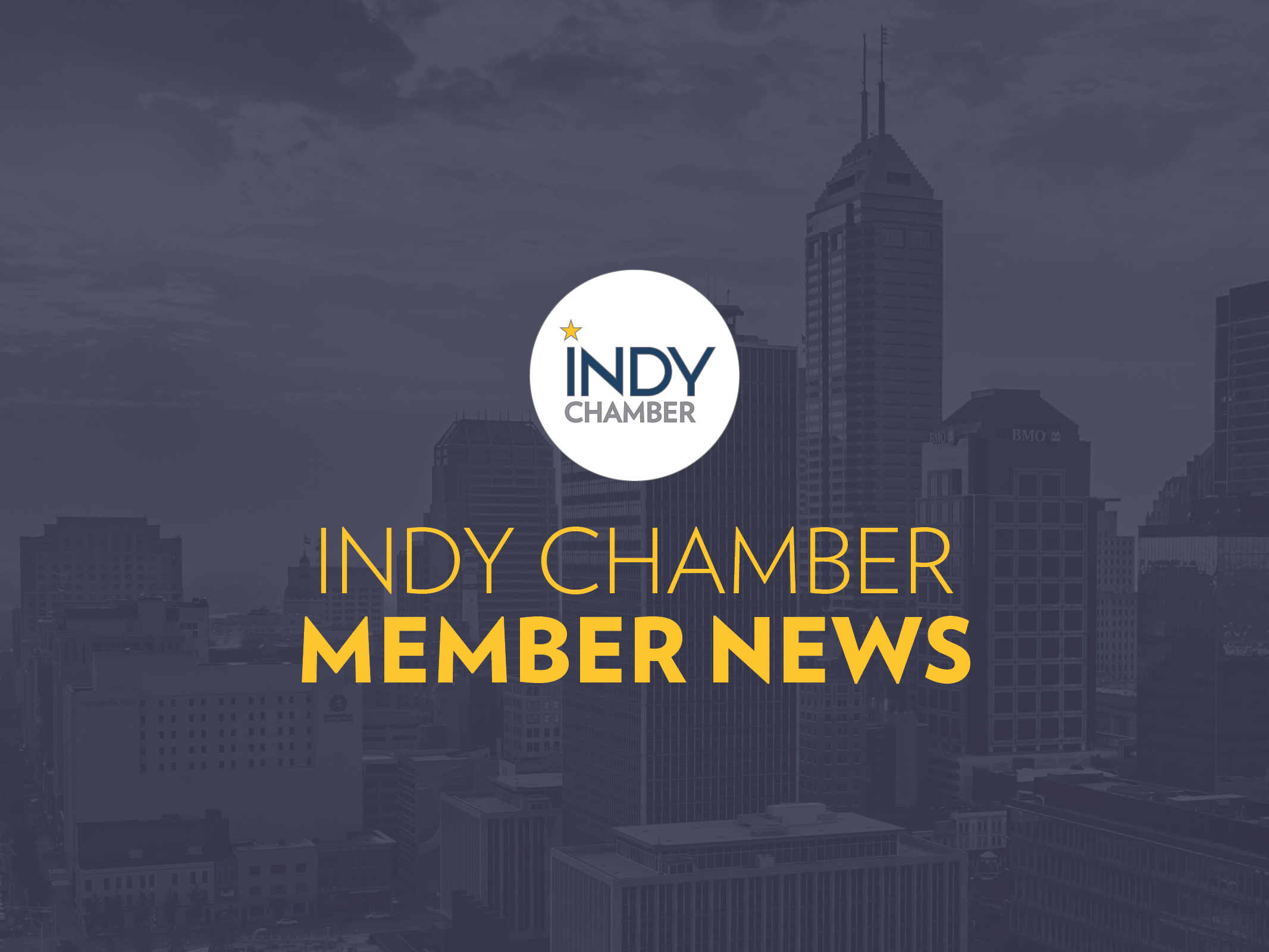Legislative Update: Surprise Party

Surprise Party
The start of April has us all thinking about spring showers, Easter Eggs, and the broken hopes of busted basketball brackets—surprises abound, and with roughly four weeks left in the 2023 Legislative Session, we’re keeping our eyes peeled. Read on to see what’s popping up as the clock is winding down.
No [Big] Smooth Ride
While we all imagine a morning commute as smooth as a Sam Perkins’ three-point shot, our current reality is a bit bumpier. Long before he and fellow Tar Heel Michael Jordan won the 1982 NCAA championship, Perkins taught himself to shoot the basketball using a milk jug he cut open and tied to the metal bars covering the windows of the New York apartment he shared with his grandmother and his two sisters. Every missed shot caused the bars to bounce against the window with a teeth-rattling clang.
Commuters in the Indy Region can sympathize, as we hear similar sounds from our vehicles’ suspension systems daily. It’s no secret that roads throughout the Indy Region are in serious need of improvement. That’s why SB 283 –and other strategies to generate capital for road maintenance—have been an Indy Chamber priority bill from the start of this session.
Originally intended to include the residents of Indianapolis’ “excluded cities”—Beech Grove, Lawrence, Southport, and Speedway—in the population figures used to determine the city’s road funding, an amendment was filed last week that would have allowed Indianapolis to be declared a distressed unit of government in the event that the City’s roads accrue over $1 billion in deferred maintenance (which describes the current situation in the capitol city). That declaration would make new tools and capital sources available to address road maintenance but would also establish a process for the state to appoint an emergency manager over all aspects of city government in Indianapolis.
The Indy Chamber team testified against the amendment, noting that Indianapolis being declared “distressed” would send a strong and negative message to potential investors that Indy isn’t a good place to put your money or expand your operations.
Additionally, the struggles with road maintenance are significantly due to the structure of the legacy state funding formula, not just actions at the City of Indianapolis. Indeed, many fast-growing municipalities are feeling the strain under the current formula. We believe a solution will require changes at both the state, regional, and local levels to strike the right balance and enhance our competitiveness as a state.
We’d ask that the bill be allowed to pass out of the House as written, and that the larger conversation about the future of Indiana road funding be allowed to continue without harming the progress of any Hoosier community.
A Healthy Debate
The Indy Region is home to multiple world-class health systems and a life sciences sector continually ranked among the top in the nation, much like the San Diego State Aztecs’ defense. Even so—like the Aztecs heading into tonight’s championship game—Hoosiers remain underdogs in the struggle with chronically poor health outcomes and, like many of our peers, feel like we’re losing the battle against rising costs of care.
Enter HB 1004, also heard this past week. The bill attempts to address the cost of care, though has struggled to build consensus among industry experts as to the optimal way forward. Disentangling the drivers of healthcare cost is a deeply complex and fraught undertaking—but one that certainly has enormous impact on the Hoosier economy, health system, employers, and individuals.
We’ve found an analysis of the factors that affect Hoosier healthcare costs by the Fairbanks School of Public Health to be an indispensable guide. That report, though now a few years old, found that personal healthcare spending per capita in Indiana is relatively in line with neighboring states and not more than 5% above national averages. That said, we know that it’s still the case that the cost of care takes a big bite out of bottom lines for Hoosiers and Hoosier employers, and that it’s critical to take steps to reduce that impact.
The underlying causes for the rising costs of healthcare are myriad and complex, and we certainly want costs in Indiana to be competitive with national averages—but the first step likely needs to be some clarity about what those costs truly are and what the state can do to invest in prevention of health crises—to that end, SB4 will be heard this week in the House Public Health Committee. We hope to see it receive resounding support there and in the Senate version of the budget.
Can You Read That Number Back to Me?
Although Wayne Gretzky was, of course, speaking of hockey when he coined the now-famous adage “you miss 100% of the shots you don’t take,” it could just as easily apply to basketball. Or life in general. It’s certainly an idea we want to impress upon Hoosier high school students as they debate their next educational steps.
Among the bills designed to help our young people take their post-high school shot is HB 1002, which seeks to establish “career scholarship accounts” to support a modern apprenticeship program in Indiana. HB 1002 was heard in the Senate Education & Career Development Committee last week, and the Indy Chamber testified in support. The bill is driving the conversation around making high school education more responsive to the needs of the market, but we think there are a few opportunities to enhance its impact.
First, adding structure for how students, families, and employers navigate the program will be critical to ensure the program can effectively introduce students to meaningful career opportunities. Ensuring that the work-based learning opportunities are credited to students academically is a major component needed as well. We also think clarity for how the state dollars funding the program will flow and target outcome to track impact will be important.
In addition, we don’t see work-based training and higher education as mutually exclusive options for young Hoosiers—nor do we want them to see things that way. A collaborative relationship (and funding structure—i.e.,.21st Century Scholars and Frank O’Bannon dollars) between higher education and work-based training will best serve our young people and the region’s employers. Also last Wednesday, House Education Chairman Bob Behning proposed an amendment making vast changes to SB 391, which initially focused on school building closures and passed the Senate in February.
The amendment included a “pilot" requirement for four Indiana counties (including Marion) to share funds raised through operating referendum tax increases with public charter schools; extends charter authorizations to 15 years instead of the current 7-year term; and sunsets the “$1 law” in July of 2025. The $1 law currently requires public school districts to sell or lease unused instructional buildings for a single dollar to public charter schools.
The Indy Chamber has been a long proponent of eliminating the $1 law to provide public school districts, especially Indianapolis Public Schools (IPS), the ability to sell its unused and underutilized buildings for market value and the flexibility to resize facility footprints without realizing a significant capital loss on its properties. We commend Chairman Behning for being open to changing course on this policy.
With SB 391 now being nearly an entirely new bill, it will be interesting to see how the Senate and author Senator Linda Rogers respond, what final language comes out of House Ways & Means, and the outcome of conference committee negotiations to hammer out differences between the House and Senate.
The policy landscape for school funding is exceedingly complex with the changes proposed in HB1001 (House budget), HB 1499 (property tax relief bill that proposes significant cuts to local government and schools), and now SB391. We view the sunsetting of the $1 law as an extremely positive development in state policy, but hope for further conversation around operating referendum funds—and the school funding formula in general—as we move forward.
An Opportunity to Act
We invite you to join our efforts. Be sure to tag @IndyChamber, @staylorhughes, and @Adam_Burtner on Twitter to show your support for legislation that's beneficial to your business and our state's success. Interested in supporting the #IndyChamberAdvocacy priorities? Click here to access a digital toolkit to help spread the word.
Never Miss an Update
Stay informed on all things Statehouse. The Indy Chamber's Business Advocacy team provides curated Legislative Updates every week. Sign up for one email a week!

Member Stories
Eskenazi Health Wins Three Categories and Takes Top Honor at Indy Chamber’s Monumental Awards

Myriad May Be Fit Challenge

Join Our Newsletter
Quick Connect Links


